The BioShock series has an established mold of solid gun mechanics flavored with powerful magic-like abilities, and it's always set in a crumbling utopia. BioShock Infinite is no different in that regard, but the game manages to deliver a fresh take on having an AI companion. At the same time, much of the game fails to capitalize on its own strengths and needlessly muddies the plot, setting up a world that doesn't get fully utilized.
It doesn't start off this way. When the game begins, all you know is that you are Booker DeWitt, a man sent to a lighthouse to find a girl and bring her back to New York. Before long, DeWitt is strapped in a rocket that lands in Columbia, a city floating among the clouds. The game takes place in 1912, and if you ignore the buildings floating in the sky, the place seems downright quaint, with barbershop quartets serenading passersby. The setting plays out like every crazy World's Fair idea of the future, but it's still imbued with the mannerisms and culture of America at the start of last century.
Before long, violence breaks out in the peaceful — if slightly creepy — world, and your first weapon is little more than a melee spinning claw called the SkyHook that lets you dish out some pain. You soon gain access to your first gun, a pistol, and from there, the game is mostly a ranged affair. You can only carry two weapons at any time, and you'll debate over which ones to lug around. There's quite a selection, and weapons that share similar purposes often have different characteristics. You'll likely end of up having your favorites, but due to ammo constraints or situational concerns, you'll just as likely try something new.
Unfortunately, the gun combat isn't as entertaining as it could be. More often than not, enemies don't react to being shot, and they're rarely slowed down by withering fire, nor are they hindered in their ability to draw a bead on you. This makes your melee attack largely useless because it doesn't stagger enemies as it should and ends up putting you at point-blank range of their unimpeded firepower. At other times, enemies react for no good reason; blow an enemy's head off with a sniper rifle, and nearby enemies may stumble as if a bomb went off. A positive side effect is that you don't feel invincible, and even lowly enemies can be a threat. However, it's difficult to fathom that a shotgun blast to an enemy's chest won't break his stride, but the same shot just a tad higher explodes his head like a melon.
It wouldn't be a BioShock game without an incredible power to back up your weapons, and in this go-round, they are represented by Vigors. Much like the Plasmids in the previous games, Vigors grant some pretty powerful abilities, each with strengths and weaknesses. Possession lets you dominate the mind of an enemy and force him to fight for you for a while, but it takes a lot of power to use. Other Vigors have a more modest usage cost, allowing you to use them more freely. Some enemies are immune to or particularly weak against some Vigors. You only learn the combinations of Vigors and enemy types through trial and error, so you learn as you go.
Vigors can be used as traps simply by holding the Vigor button and then aiming at the ground, and all Vigors work in this manner. If you expect to get rushed by a bunch of enemies, lay down a Murder of Crows trap at the choke point, and use another Vigor to start combat before they open fire. Traps are rarely necessary, and it's often easy to forget about them, but they let you fortify your position in the larger fights. However, placing a Vigor as a trap still consumes the same power as a normal use, so you can't place traps everywhere.
Guns and Vigors can be upgraded at booths throughout the game, with the former getting conventional damage, recoil, magazine size, or other adjustments. Vigors can get fundamentally changed, such as allowing Possession to work on people and machines, or Murder of Crows placing a trap any time an enemy dies under its effect. That particular upgrade is almost absurdly powerful, as a single trap can affect multiple enemies. When it does, you tap each of them with a few bullets and then laugh manically because you now have an area covered in traps. There doesn't seem to be a time limit on how long the traps exist, so if you have to backtrack through the same area and more enemies appear, they're pretty much screwed.
Clothing objects can be picked up and equipped in four categories: boots, hats, pants and shirts. Each has benefits, such as increasing weapon damage when you are low on life or adding a fire effect to melee strikes. These benefits rarely change how you play, but they let you tailor things to your play style. You can find them through exploration, so players who do so will be rewarded with quite a selection of gear.
The game world is exceptionally well portrayed at first, and before the violence starts, you are free to poke around the city, which is bustling with inhabitants going about their business. There's a level of whimsical intrigue so palpable that you can almost cut it with a knife; there's just so much going on around you. However, soon after the gunfire, it's almost like the game forgets this. It's just you, waves of enemies, and a game world that suddenly lacks much of its charm. One doesn't expect to be serenaded while the lead is flying, but other than the more keystone battles, the game feels devoid of character.
In BioShock, the fact that you're in an underwater city was fully explored at the outset of the game, but it also permeates the game, whether it's as invasive as the threat of water bursting into the compartment or as simple as seeing fish swimming outside the "window." BioShock Infinite takes place in a floating city, but for much of the game, you won't see many reminders. Platforms don't shift or fall, and there aren't any fancy glass floors that let you see a landmass below; for all intents and purposes, the game goes to great lengths to set up a fantastic environment and then simply forgets about it.
However, one could write volumes about how well Elizabeth is presented. While you could consider her to be a massive escort quest, Elizabeth doesn't get lost, get hurt, or get in the way. At the same time, she realistically cowers behind things when gunfire is exchanged, or she takes a closer look at things during the calmer segments. She feels just as much a part of the game as you do, and it really helps to sell her as a believable companion instead of a mindless automaton. It doesn't hurt that she is exceptionally well animated and voiced, and every action seems to have a purpose.
While she doesn't directly engage in combat, Elizabeth is still useful in a fight. There are tears in the game world, and she can temporarily pull things from other dimensions to help you in a fight, such as a pile of guns or a friendly robotic turret. If are on low on ammo, health or power, she may toss you some that she finds or flip a coin your way. If you are constantly low on health, you won't see her constantly tossing medical kits your way, but it's pretty awesome when you run low on rifle ammo and she tosses you a freshly loaded weapon for the first time.
It is hard to talk much about the plot without spoiling anything, but suffice it to say that there are twists along the way culminating in a larger twist at the end. Along the way, the story doesn't flesh itself out unless you find and listen to all of the voxographs, which are voice recordings left behind by other characters. There are major plot points that are contained within these errant devices, so anyone looking to make sense of the plot would do well to search for them. Miss one, and you may finish the game without knowing why the plot unfolded the way it did. That's not to say that all loose ends are resolved at the end of the game, as it's been the topic of fan debate since the game was released.
At the end of it all, it is tough to determine where BioShock Infinite stands. As well as Elizabeth is implemented and as fun as Vigors are to use, the counterbalance is that the gun play feels unsatisfying and disjointed. Trading fire with enemies is still fun, but it feels nowhere near as polished as the other game mechanics. Infinite undeniably takes place in the world of BioShock, and it fits into the series. At the same time, the title borrows too heavily from its own pedigree, and it only seems to halfheartedly establish its own identity. The game is entertaining from start to finish, but it's also tragically marred by the unshakeable sense that it could have been so much more and simply got lost along the way.
Score: 8.1/10
Reviewed on: Intel i5 2500k, 8 GB RAM, nVidia GTX 660 Ti
More articles about BioShock Infinite




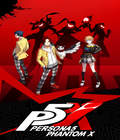
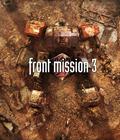

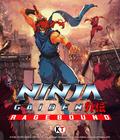
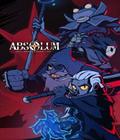
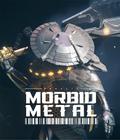

 Set in 1912, BioShock Infinite introduces an entirely new narrative experience that lifts players out of the familiar confines of Rapture and rockets them to Columbia, an immense city in the sky.
Set in 1912, BioShock Infinite introduces an entirely new narrative experience that lifts players out of the familiar confines of Rapture and rockets them to Columbia, an immense city in the sky.

































